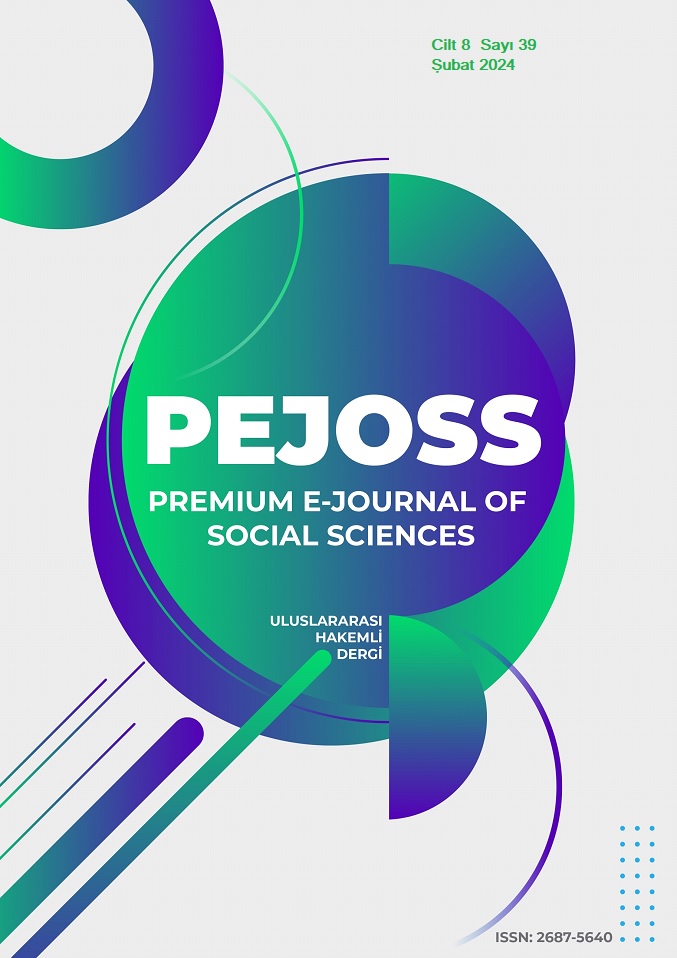Analysis of the Famous Oboe Solo in the Second Movement (Adagio) of Johannes Brahms' Violin Concerto in D Major, Op. 77.
DOI:
https://doi.org/10.5281/zenodo.10784732Keywords:
Brahms, Oboe, Violin Concerto, Romantic Period, Classical MusicAbstract
Brahms' Violin Concerto is considered one of the most important works in the classical music repertoire and reflects the composer's mastery, emotional depth and technical abilities at their best. The concerto represents the pinnacle of Brahms' compositional style, while also showcasing the expressive power and variety of the violin. The work in three movements presents an impressive dialogue between violin and orchestra. With its deep melodies, complex harmonies and emotional intensity, it occupies an important place in classical music literature.
The Adagio, the second movement of Johannes Brahms' Violin Concerto in D Major, Op. 77, occupies an important place in the musical literature. This movement is particularly recognisable for its famous oboe solo and demonstrates Brahms' compositional skill and emotional depth. Analysing the Adagio helps us to better understand Brahms' masterly orchestration, melodic variety and emotional expression.
This article aims to analyse this musical element in detail, focusing on the analysis of the oboe solo in the Adagio movement of the Violin Concerto Op. 77. By analysing the melodic structure, rhythmic characteristics and harmonic use of the oboe solo, Brahms' compositional style and emotional impact in this movement are examined.
Furthermore, the general atmosphere and tonal structure of the Adagio are emphasised, highlighting the role and importance of the oboe solo in the work as a whole. This article aims to provide musicologists, students and music lovers with a comprehensive resource for understanding and appreciating an important section of Brahms' Second Violin Concerto.
Downloads
References
Akdeniz, A. Ö. & Artaç, A. (2023a). Konservatuvar eğitiminde Brahms’ ın op. 108 re minör keman-piyano sonatının, bestecinin müzikal stil ve çalış teknikleri açısından incelenmesi ve öneriler. Rast Müzikoloji Dergisi, 11(2), s. 263-288.
Akdeniz, A. Ö. & Artaç, A. (2023b). Müzikte Sanatsal Yaklaşımlar Johannes Brahms’ın Op. 30 Sayılı Scherzo’sunun Keman ve Piyano Partisinin İncelenmesi Livre de Lyon. s.1
Flores, J.G. (2006). The Violin Concerto and the Second Symphony by Johannes Brahms: Musical Resemblance as a result of the Proximity in their Dates of Composition. The University of Arizona.
Goetschius, P. (1923). The larger forms of musical composition. (Fourth Edition). G. Schirmer.
Hart, H.A.W. (2006). An Exploration of Underplayed Violin Concertos Appropriate for Intermediate and Advanced Students. The Florida State University College of Music.
Hsieh, I. C. (1997). Performance of the Violin Concerto and Sonatas of Johannes Brahms with an Analysis of Joseph Joachim's Influence on Ms Violin Concerto, University of Maryland.
Neglia-Khachatryan, D.M. (2015). Schumann’s Violin Concerto: A Neglected Treasure? Indiana University.
Swalin, B.F. (1936). The Brahms Violin Concerto: A Stylistic Criticism. Members of the American Musicological Society.
Woodard, M. (2017). On The Record: Interpreting Recorded Orchestral Excerpts For The Oboe, 1910 – 2016. Temple University Graduate Board.
Downloads
Published
How to Cite
Issue
Section
License
Copyright (c) 2024 Premium e-Journal of Social Science (PEJOSS)

This work is licensed under a Creative Commons Attribution 4.0 International License.


